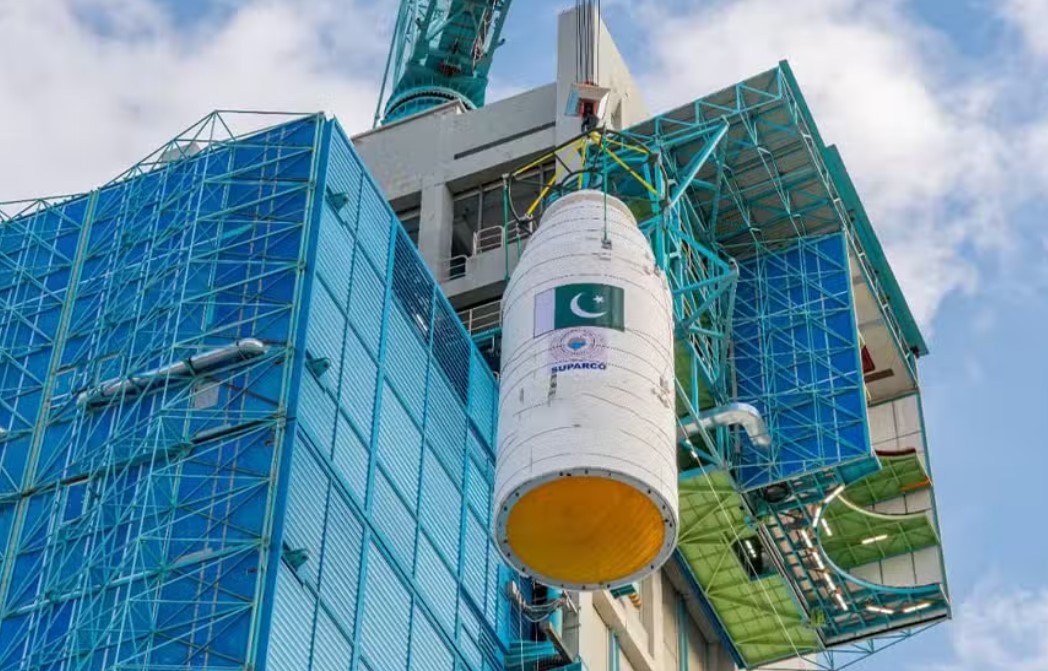Pakistan Makes History: Launches First Ever Electro Optical Satellite into Space!

In a historic achievement, Pakistan successfully launched its first indigenous Electro-Optical Satellite (EO-1) on January 17, 2025, from the Jiuquan Satellite Launch Centre (JSLC) in China.
The Pakistan Space and Upper Atmosphere Research Commission (SUPARCO) announced the milestone as a significant step forward in the nation’s journey toward technological self-reliance in space exploration.
Are you ready to witness a groundbreaking achievement?
The satellite stands as proof of the skill and commitment shown by SUPARCO’s engineers and scientists, enhancing Pakistan’s proficiency in cutting-edge space technology.
Pakistan has just launched its very first electro optical satellite, marking a significant milestone in the country’s space exploration efforts. This historic moment will pave the way for advanced imaging capabilities and unlock new possibilities in various fields. Join us as we delve into this remarkable feat and explore how it promises to revolutionize our understanding of Earth from outer space.
In recent years, countries around the world have been investing heavily in their space programs, aiming to expand scientific knowledge while harnessing innovative technologies for societal benefits. And now, Pakistan has joined this elite group with an extraordinary leap forward – launching its inaugural electro optical satellite.
The successful launch is not only a testament to Pakistan’s growing expertise but also represents a crucial step towards enhancing national security measures through improved surveillance systems. Equipped with cutting-edge technology, including high-resolution cameras capable of capturing detailed images even from great distances above Earth’s surface; this state-of-the-art satellite opens up endless opportunities across multiple sectors.
One area where the newly launched Pakistani satellite will undoubtedly make waves is agriculture. With precise data on soil moisture levels and crop health obtained through remote sensing techniques employed by these satellites; farmers can optimize irrigation practices resulting in increased yields while minimizing

The EO-1 satellite is a crucial tool for monitoring natural resources, managing disasters, and supporting urban and agricultural development. Its advanced observation capabilities enhance precision farming techniques, improve irrigation management practices, and predict crop yields more accurately in the agricultural sector.
In terms of urban planning applications, it aids in monitoring infrastructure developments while also helping control issues related to rapid urban expansion. Additionally, enabling tracking environmental changes such as deforestation rates, melting glaciers, and water resource fluctuations – all key components when addressing urgent climate challenges.
During this significant event, the Chairman of SUPARCO, Muhammad Yousaf Khan, gave credit for achieving this milestone, wishing hard work from agency engineers, demonstrating unwavering support from Pakistan’s government. He emphasized that by launching the satellite, Pakistan highlights their commitment towards leveraging space technology to promote sustainable development and national progress.
Furthermore, the Chairman stated that this project showcases the government’s dedication in fostering innovation while advancing the nation’s space program in an endeavor to facilitate infrastructure monitoring and curb uncontrolled urban sprawl, it will play a pivotal role. Furthermore, it comes with great potential for tracking critical environmental changes including deforestation activities, collapsing glaciers, and fluctuating water sources; all integral parts when dealing with pressing climate crises
SUPARCO Chairperson Muhammad Yousaf Khan attributed this remarkable achievement to users’ hard work alongside the unflinching backing supplied by Pakistan’s government. He magnified that by successfully launching the satellite, Pakistan showcased their commitment towards utilizing space technologies promote growth that it self-sustaining well antennation wide advance men initiatives. Moreover, Khan highlighted how this project signifies the government’s determination to promote creativity and also enhance the space program of the nation.
The satellite is an essential tool in disaster management, providing real-time information on floods, landslides, and earthquakes. This data greatly aids authorities in responding more efficiently to these events.
Moreover, the satellite plays a vital role in monitoring and preserving Pakistan’s natural resources. It helps track mineral deposits as well as energy reserves like oil and gas.
With its wide range of capabilities, the EO-1 proves invaluable for making informed decisions that contribute to socio-economic growth.






